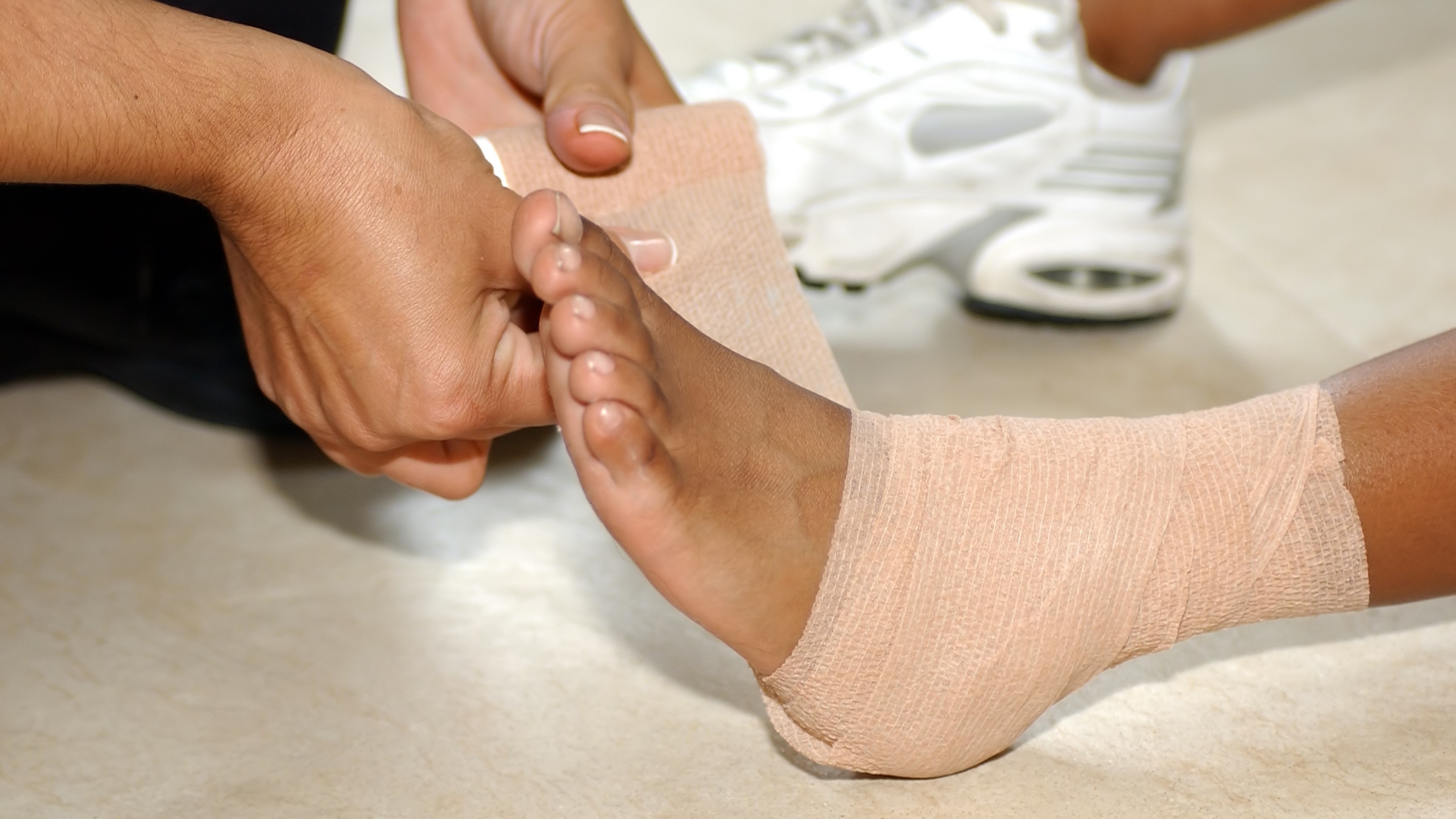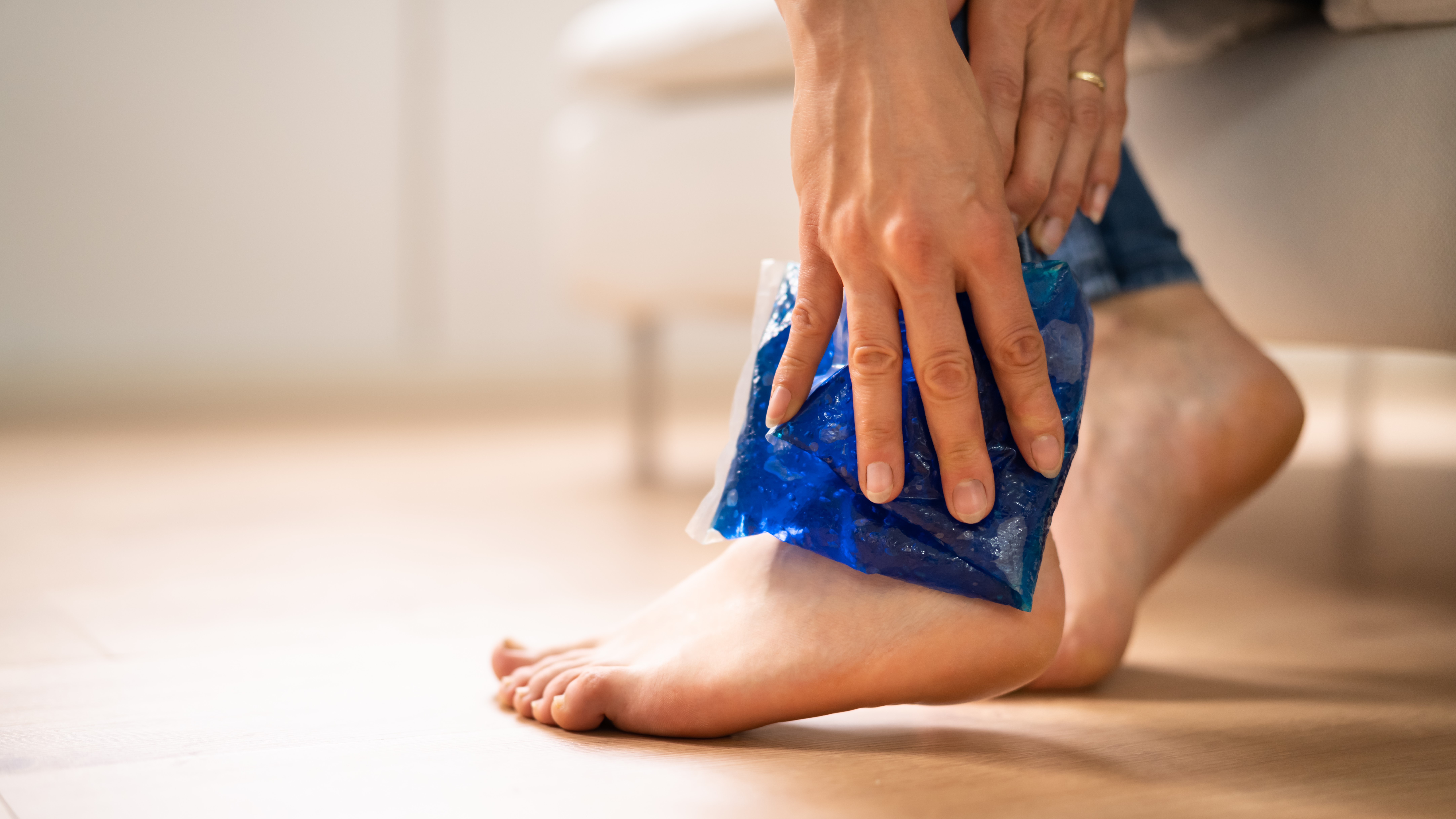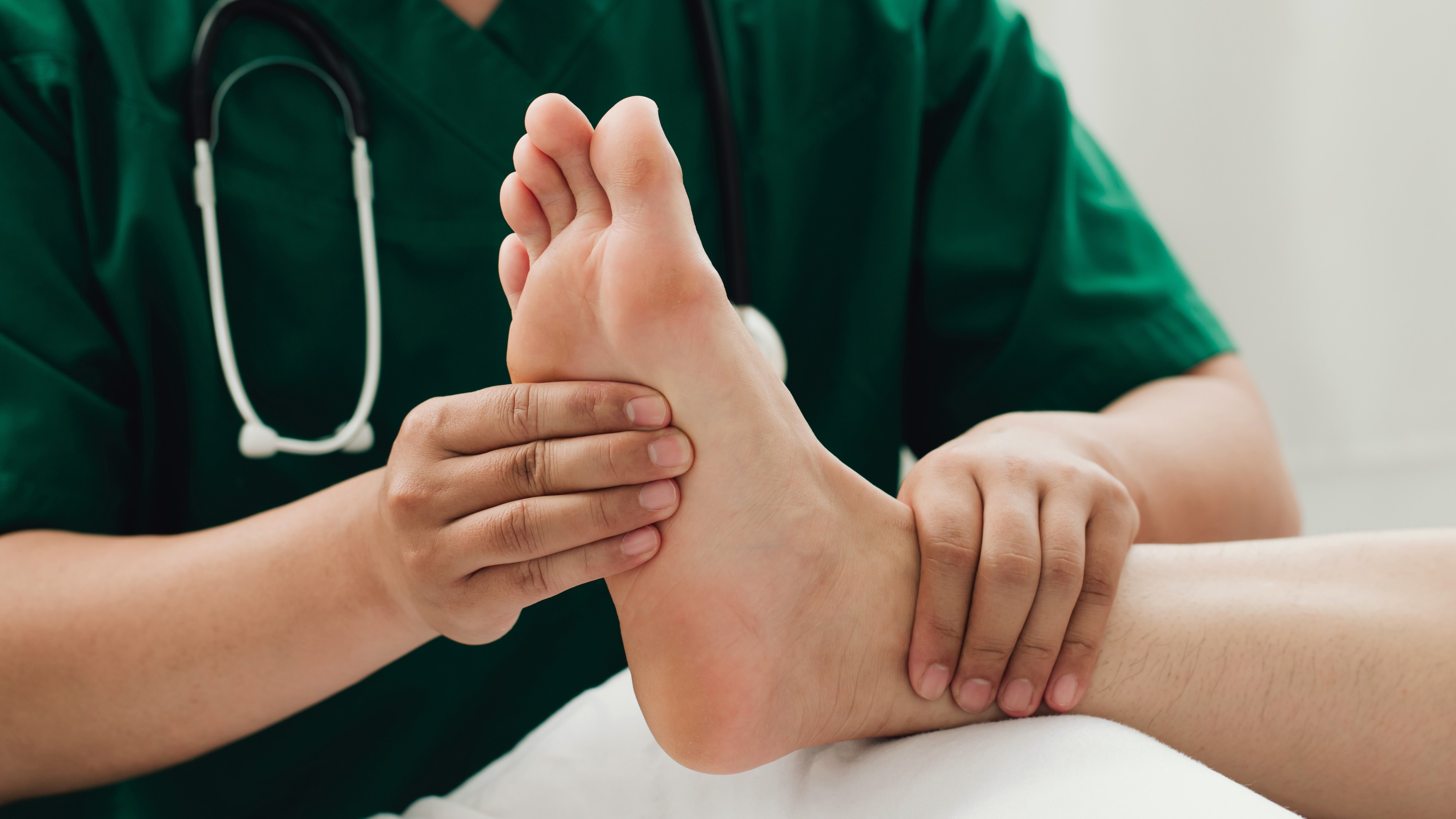
Rest, ice, compression, elevation. If you’ve ever suffered a sports injury, you’ve probably heard these four words, better known as the RICE protocol. As the recipient of one separated shoulder joint, two knee surgeries and the odd sprained ankle here and there, I hate to think about all the time (and money) I’ve spent on ice machines and compression sleeves.
The RICE protocol has been widely used in the medical profession for over 40 years and it centers around what most of us probably think of when we imagine healing from an injury. Your trail running shoes or hiking boots get tidied away and you sit with your feet up and go through several bags of frozen peas, allowing that sprained ankle or knee to heal by not using it. Simple.
In recent years, however, the approach has started to fall out of favor. I first became aware of this when I picked my ex-boyfriend up from the hospital after having major hip surgery. Instead of getting sent home with a prescription for Netflix and bowls of ice cream, he was wheeled downstairs to the physical therapy unit and immediately put on a stationary bike and told to start pedaling, all while holding a sick bowl under his chin to clear up any side effects from an allergic reaction to the anesthetic.
A few years later, following my first knee surgery, I found myself subject to the same treatment and, because we had to talk about something during the countless hours I spent on tables having my knee manipulated, talked to a lot of different PTs about the pros and cons of the RICE protocol. If you’re recovering from an injury, your first stop should always be a medical professional, but if you’re curious about research on the RICE method and more current lines of treatment, read on for what we know so far.

What is the RICE protocol?
The RICE protocol has for a long time been the standard operating procedure when it comes to treating soft tissue injuries such as a sprained ankle or ACL and even for healing after surgery. The coin was termed by Dr Gabe Mirkin in The Sportsmedicine Book in 1978 and it’s a protocol to produce pain and inflammation and promote healing.
The four elements of the RICE protocol include:
- Rest: Immobilize or avoid using the affected area.
- Ice: Apply ice to the affected area to help reduce pain and swelling.
- Compression: Use a compression sleeve or bandage to reduce swelling.
- Elevation: Elevate the affected area elevated to decrease swelling.
If you’re unlucky enough to sprain your ankle on a hike, this would mean that you’d avoid weight bearing as much as possible while your ankle is still swollen and use an ankle support brace to immobilize it. You’d apply an ice pack to it for 20 minutes at a time, wear a compression bandage and prop it up on a pillow while sitting up in bed or on the couch, so that it’s higher than your hip.
Does RICE work?
When you’ve become the recent recipient of a joint injury like a sprained ankle, nothing sounds better than sitting with your foot up and holding a cold ice pack on it, but does the RICE protocol work?
While no one would recommend you run a 10k with a freshly sprained ankle, the response from the medical community seems to be largely a resounding ‘no’ to complete rest these days. A 2001 randomized controlled trial found that among patients with ankle sprains, those that received manual therapy techniques to mobilize their ankle achieved full pain-free dorsiflexion faster than those who followed a protocol of complete rest. So much for sitting on the couch watching Netflix, then.
While you might not get as much rest while healing from your injury as you’d hoped, there is some evidence for icing an injured joint, otherwise known as cryotherapy, but just whacking an ice pack on it twice a day for a month probably isn’t helpful, and may even hamper your healing process.
Years ago, I went to see my acupuncturist immediately after icing my knee. Many months had passed since I’d had surgery, but I still had a lot of swelling and pain, so I was icing it every day. She was startled to feel how cold my knee was and when I explained I was still icing regularly, she suggested that to bring life back into the joint, I wanted to be encouraging circulation, not reducing it with cold therapy. Cryotherapy, she explained, was best for acute injuries, in the days immediately following the injury. I stopped icing my knee and it soon started feeling better.
Anyway, if you’re thinking to yourself, ‘what does an acupuncturist know?’ the answer is quite a lot as it turns out. Though ice applied immediately to an acute injury does help to reduce initial swelling, it also reduces blood flow to the affected area, and that may hinder the healing process if you continue to ice for weeks or months, according to at least one research article published in 2021.

So there is some argument for ice in certain situations, but the waters around compression are quite a bit more muddy. Compression is used, in theory, to reduce swelling as well as the chances of hemorrhaging. For a minor injury, this might take the form of tightly wrapping the area in a compression bandage, but these days there are also intermittent pneumatic compression machines that look like a giant boot, which alternate between short bouts of inflated compression and deflation – a bit like the blood pressure sleeve you put on at the doctor’s when you go in for a checkup.
However, as recently as 2015, researchers noted that definitive conclusions on compression have not been reached, due to the poor quality of evidence available and the variety of treatments used.
Finally, what about elevation? This protocol is a pretty easy one to administer, because it basically involves putting your leg up on a cushion. Since gravity moves things downward, keeping your foot below your body may encourage the build up of fluid post-injury, which can put more pressure on the joint, while elevating it against gravity can help reduce that build up.
For this step in the RICE protocol, there is some supporting evidence – in a 2006 study, researchers measured ankle girth pre- and post-elevation and found that elevation significantly reduced swelling, with 60 degrees of elevation being the optimal height. So you can put your foot up post injury, but you’ll probably want to alternate elevation with movement to speed along your recovery.
So, does the RICE protocol work? As you can see it’s a bit of a mixed bag. Movement certainly seems to be a better approach than total rest, while ice can be effective in the days immediately following your injury but not long term. There’s no conclusive research on compression, but elevation does seem to be of benefit, and this is the one piece that many physical therapists continue to recommend today.
That said, it all depends on the severity of your injury and your approach – how long and frequently you’re icing for and what angle of elevation you’re using might make a difference.

Is RICE outdated?
You could argue, given research, that the RICE protocol is now a little outdated, but remember that medical science is always evolving and there are elements of RICE that can be effective, in certain situations.
Another approach that has arisen in response to the lack of supporting evidence for RICE is the so-called MEAT method:
- Movement: Gentle movement that doesn’t exacerbate pain levels.
- Exercise: Gradual progression of prescribed exercises once pain and swelling are reduced.
- Analgesics: Natural, over-the-counter or prescription painkillers to help manage pain.
- Treatment: Working with a trained professional to establish a treatment program.
Using this approach, medical practitioners will have you begin with very gentle movement of the joint as soon as possible that doesn’t exceed your pain tolerance. This might look like gently flexing your ankle or moving your knee between a few degrees of flexion and extension. Movement circulation in the joint, which feeds the cells with oxygen and encourages the healing process.

Once swelling has gone down and your pain is reduced, the next step is to begin a gentle exercise routine as prescribed by a physical therapist. This is designed to place gentle load on the muscles and ligaments to encourage them to strengthen.
Analgesics refer to painkillers used to help you manage pain initially so that you can proceed with the first few stages, however it’s important to note that you should consult with your doctor before proceeding with any painkillers, as some may be contraindicated with your healing process.
Finally, treatment refers to working with a professional to create a plan for healing and this may or may not be necessary depending on the severity of your injury. Obviously, treatment includes the previous steps, but it may also include manual manipulation, sports massage, dry needling and other techniques that can be offered by a trained professional such as a physical therapist.
As you can see, there is more research to be done on the best approach to treatment when you’re healing from injury, but all the evidence so far points toward movement over rest, which is good news for those of you itching to get back out on the trail. That said, don’t get out there too quickly or you might end up back on the couch after all.







